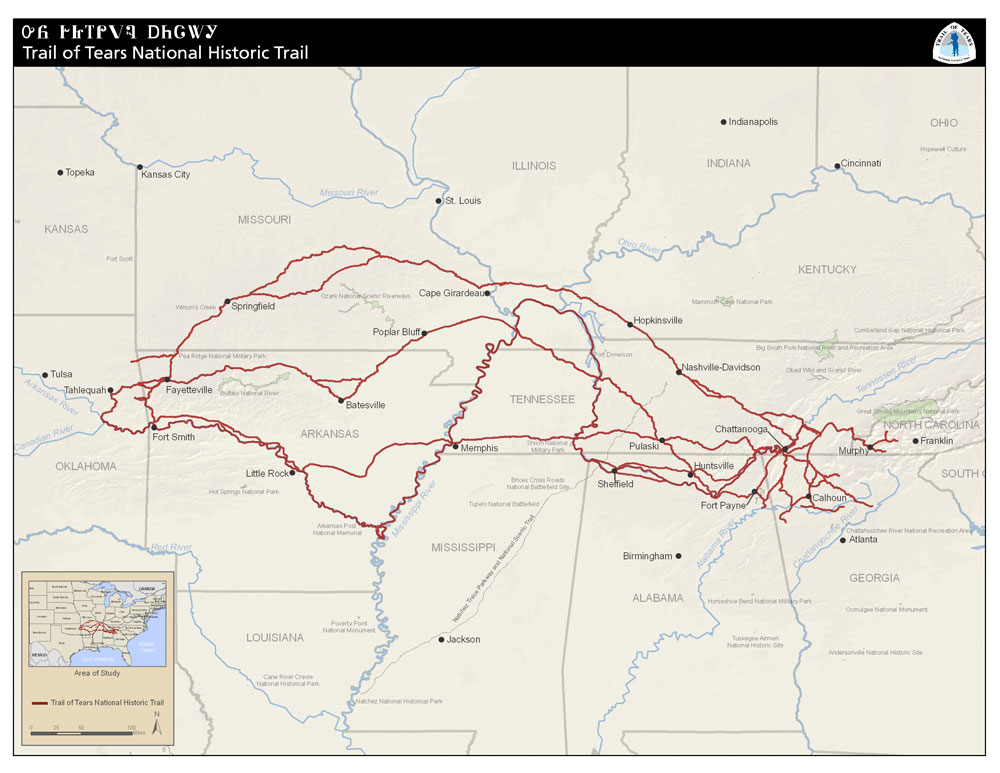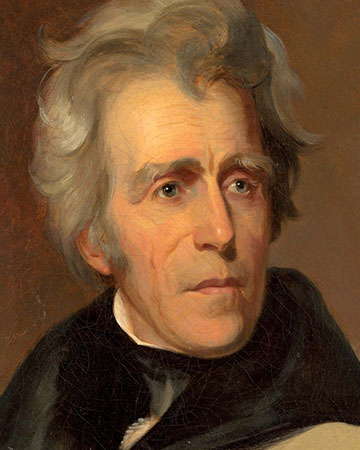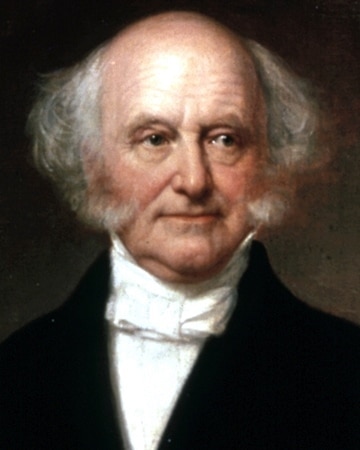The Trail

History of the Trail
The discovery of the New World by European explorers caused endless problems for American Indians, whose homelands were gradually taken from them and whose cultures were dramatically altered, and in some cases destroyed, by the invasion.
The first contact between southeastern American Indians and Europeans was the expedition of Hernando de Soto in 1540. De Soto took captives for use as slave labor, while others were abused because the Europeans deemed them savages. Epidemic diseases brought by the Europeans spread through the Indian villages, decimating native populations.
Over the next two centuries more and more white settlers arrived, and the native cultures responded to pressures to adopt the foreign ways, leading to the deterioration of their own culture. During the colonial period Indian tribes often became embroiled in European colonial wars. If they were on the losing side, they frequently had to give up parts of their homelands.
After the American Revolution the Indians faced another set of problems. Even though it took time for the new government to establish a policy for dealing with the Indians, the precedent had been set during the colonial period. The insatiable desire of white settlers for lands occupied by Indian people inevitably led to the formulation of a general policy of removing the unwanted inhabitants.
Political leaders including President Thomas Jefferson believed that the Indians should be civilized, which to him meant converting them to Christianity and turning them into farmers. Many other whites agreed, and missionaries were sent among the tribes. But when the transformation did not happen quickly enough, views changed about the Indian people’s ability to be assimilated into white culture.
National policy to move Indians west of the Mississippi River developed after the Louisiana Territory was purchased from the French in 1803. Whites moving onto these lands pressed the U.S. government to do something about the Indian presence. In 1825 the U.S. government formally adopted a removal policy, which was carried out [From Trail of Tears National Historic Trail by Elliott West. Copyright © 2000 by Elliott West. Reproduced by permission.] extensively in the 1830s by Presidents Andrew Jackson and Martin Van Buren. The result was particularly overwhelming for the Indians of the southeastern United States – primarily the Cherokees, Chickasaws, Choctaws, Creeks, and Seminoles – who were finally removed hundreds of miles to a new home.
Perhaps the most culturally devastating episode of this era is that concerning the removal of the Cherokee Indians, who called themselves Ani’-Yun’ wiya (the Principal People). Traditionally the Cherokees had lived in villages in the southern Appalachians – present-day Virginia, West Virginia, Kentucky, Tennessee, western North Carolina and South Carolina, northern Georgia, and northeastern Alabama. Here in a land of valleys, ridges, mountains, and streams they developed a culture based on farming, hunting, and fishing.
The Cherokees took on some of the ways of white society. They built European-style homes and farmsteads, laid out European-style fields and farms, developed a written language, established a newspaper, and wrote a constitution. But they found that they were not guaranteed equal protection under the law and that they could not prevent whites from seizing their lands. They were driven from their homes, herded into internment camps, and moved by force to a strange land.


Cherokee Relations with the U.S. Government
States' Rights Issue
The Cherokee situation was further complicated by the issue of states’ rights and a prolonged dispute between Georgia and the federal government. In 1802 Georgia was the last of the original colonies to cede its western lands to the federal government. In doing so, Georgia expected all titles to land held by Indians to be extinguished. However, that did not happen, and Cherokees continued to occupy their ancestral homelands, which had been guaranteed to them by treaty.
Georgia residents resented the Cherokees’ success in holding onto their tribal lands and governing themselves. Settlers continued to encroach on Cherokee lands, as well as those belonging to the neighboring Creek Indians. In 1828 Georgia passed a law pronouncing all laws of the Cherokee Nation to be null and void after June 1, 1830, forcing the issue of states’ rights with the federal government. Because the state no longer recognized the rights of the Cherokees, tribal meetings had to be held just across the state line at Red Clay, Tennessee.
When gold was discovered on Cherokee land in northern Georgia in 1829, efforts to dislodge the Cherokees from their lands were intensified. At the same time President Andrew Jackson began to aggressively implement a broad policy of extinguishing Indian land titles in affected states and relocating the Indian population.
Supreme Court Cases
In 1830 Congress passed the Indian Removal Act, which directed the executive branch to negotiate for Indian lands. This act, in combination with the discovery of gold and an increasingly untenable position with the state of Georgia, prompted the Cherokee Nation to bring suit in the U.S. Supreme Court. In Cherokee Nation v. Georgia (1831) Chief Justice John Marshall, writing for the majority, held that the Cherokee Nation was a “domestic dependent nation,” and therefore Georgia state law applied to them.
That decision, however, was reversed the following year in Worcester v. Georgia. Under an 1830 law Georgia required all white residents in Cherokee country to secure a license from the governor and to take an oath of allegiance to the state. Missionaries Samuel A. Worcester and Elizur Butler refused and were convicted and imprisoned. Worcester appealed to the Supreme Court. This time the court found that Indian nations are capable of making treaties, that under the Constitution treaties are the supreme law of the land, that the federal government had exclusive jurisdiction within the boundaries of the Cherokee Nation, and that state law had no force within the Cherokee boundaries. Worcester was ordered released from jail.
President Jackson refused to enforce the court’s decision, and along with legal technicalities, the fate of the Cherokees seemed to be in the hands of the federal government. Even though the Cherokee people had adopted many practices of the white culture, and had used the court system in two major Supreme Court cases, they were unable to halt the removal process.
The Treaty of New Echota
The state of Georgia continued to press for Indian lands, and a group of Cherokees known as the Treaty Party began negotiating a treaty with the federal government. The group, led by Major Ridge and including his son John, Elias Boudinot, and his brother Stand Watie, signed a treaty at New Echota in 1835. Despite the majority opposition to this treaty – opposition that was led by Principal Chief John Ross – the eastern lands were sold for $5 million, and the Cherokees agreed to move beyond the Mississippi River to Indian Territory. The Senate ratified the treaty despite knowledge that only a minority of Cherokees had accepted it. Within two years the Cherokees were to move from their ancestral homelands.
The Roundup
President Martin Van Buren ordered the implementation of the Treaty of New Echota in 1838, and U.S. Army troops under the command of Gen. Winfield Scott began rounding up the Cherokees and moving them into stockades in North Carolina, Georgia, Alabama, and Tennessee. Altogether 31 forts were constructed for this purpose – 13 in Georgia, 5 in North Carolina, 8 in Tennessee, and 5 in Alabama. All of the posts were near Cherokee towns, and they served only as temporary housing for the Cherokees.
As soon as practical, the Indians were transferred from the removal forts to 11 internment camps that were more centrally located – 10 in Tennessee and 1 in Alabama. In North Carolina, for example, Cherokees at the removal forts were sent to Fort Butler, and by the second week in July on to the principal agency at Fort Cass. By late July 1838, with the exception of the Oconaluftee Citizen Indians, the fugitives hiding in the mountains, and some scattered families, virtually all other Cherokees remaining in the East were in the internment camps.
According to a military report for July 1838, the seven camps in and around Charleston, Tennessee, contained more than 4,800 Cherokees: 700 at the agency post, 600 at Rattlesnake Spring, 870 at the first encampment on Mouse Creek, 1,600 at the second encampment on Mouse Creek, 900 at Bedwell Springs, 1,300 on Chestooee, 700 on the ridge east of the agency, and 600 on the Upper Chatate. Some 2,000 Cherokees were camped at Gunstocker Spring 13 miles from Calhoun, Tennessee.
One group of Cherokees did not leave the mountains of North Carolina. This group traced their origin to an 1819 treaty that gave them an allotment of land and American citizenship on lands not belonging to the Cherokee Nation. When the forced removal came in 1838, this group – now called the Oconaluftee Cherokees – claimed the 1835 treaty did not apply to them as they no longer lived on Cherokee lands. Tsali and his sons were involved in raids on the U.S. soldiers who were sent to drive the Cherokees to the stockades. The responsible Indians were punished by the army, but the rest of the group gained permission to stay, and North Carolina ultimately recognized their rights. Fugitive Cherokees from the nation also joined the Oconaluftee Cherokees, and in time this group became the Eastern Band of Cherokee Indians, who still reside in North Carolina today.
Trail of Tears
Water Routes
Three detachments of Cherokees, totaling about 2,800 persons, traveled by river to Indian Territory. The first of these groups left on June 6 by steamboat and barge from Ross’s Landing on the Tennessee River (present-day Chattanooga). They followed the Tennessee as it wound across northern Alabama, including a short railroad detour around the shoals between Decatur and Tuscumbia Landing. The route then headed north through central Tennessee and Kentucky to the Ohio River. The Ohio took them to the Mississippi River, which they followed to the mouth of the Arkansas River. The Arkansas led northwest to Indian Territory, and they arrived aboard a steamboat at the mouth of Sallisaw Creek near Fort Coffee on June 19, 1838. The other two groups suffered more because of a severe drought and disease especially among the children, and they did not arrive in Indian Territory until the end of the summer.
Land Routes
The rest of the Cherokees traveled to Indian Territory overland on existing roads. They were organized into detachments ranging in size from 700 to 1,600, with each detachment headed by a conductor and an assistant conductor appointed by John Ross. The Cherokees who had signed the treaty of New Echota were moved in a separate detachment conducted by John Bell and administered by U.S. Army Lt. Edward Deas. A physician, and perhaps a clergyman, usually accompanied each detachment. Supplies of flour and corn, and occasionally salt port, coffee, and sugar, were obtained in advance but were generally of poor quality. Drought and the number of people being moved reduced forage for draft animals, which often were used to haul possessions, while the people routinely walked.
The most commonly used overland route followed a northern alignment, while other detachments (notably those led by John Benge and John Bell) followed more southern routes, and some followed slight variations. The northern route started at Calhoun, Tennessee, and crossed central Tennessee, southwestern Kentucky, and southern Illinois. After crossing the Mississippi River north of Cape Girardeau, Missouri, these detachments trekked across southern Missouri and the northwest corner of Arkansas.
Road conditions, illness, and the distress of winter, particularly in southern Illinois while detachments waited to cross the ice-choked Mississippi, made death a daily occurrence. Mortality rates for the entire removal and its aftermath were substantial, totaling approximately 3,000 – 4,000.
Most of the land route detachments entered present-day Oklahoma near Westville and were often met by a detachment of U.S. troops from Fort Gibson on the Arkansas River. The army officially received the Cherokees, who generally went to live with those who had already arrived, or awaited land assignments while camped along the Illinois River and its tributaries east of present-day Tahlequah.
The Aftermath
In the Indian Territory problems quickly developed among the new arrivals and Cherokees who had already settled, especially as reprisals were taken against the contingent who had signed the Treaty of New Echota. As these problems were resolved, the Cherokees proceeded to adapt to their new homeland, and they reestablished their own system of government, which was modeled on that of the United States.
Tribal government was headquartered in Tahlequah and adhered to a constitution that divided responsibilities among an elected principal chief, an elected legislature known as the National Council, and a supreme court with lesser courts. Local districts with elected officials, similar to counties, formed the basis of the nation. The Cherokees maintained a bilingual school system, and missionaries from the American Board of Commissioners for Foreign Missions were active in the nation.
This autonomy remained reasonably strong until the Civil War, when a faction of the Cherokees sided with the Confederacy. During Reconstruction they suffered a loss of self-government and, more importantly, their land base. Government annuities were reduced, and lands were sold to newly arrived tribes. Cessions of land continued during the later 19th century, and the federal government emerged as the major force for land cession under the Dawes Act of 1887, which divided up tribal lands. The establishment of the state of Oklahoma in 1907 increased pressure for land cessions. Many people of questionable Cherokee ancestry managed to get on the tribal rolls and participate in the allotment of these lands to individuals. By the early 1970s the western Cherokees had lost title to over 19 million acres of land.
Difficult times continued because of the effects of the 1930s depression and the government policy to relocate Indians from tribal areas to urban America. Many Cherokees found themselves in urban slums with a lack of basic needs. Differences also emerged between traditionalists and those who adapted to mainstream society. During the 1970s and after, however, the Cherokees’ situation improved because of self rule and economic programs.
Throughout the years, the Cherokees have sought to maintain much of their cultural identity. To increase public awareness of their heritage, many of them have advocated the designation of the Trail of Tears as a national historic trail.
